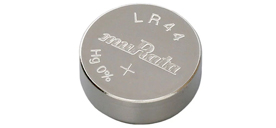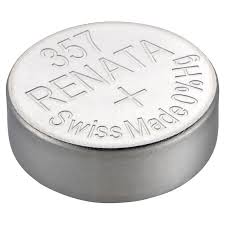LR44 Battery: Understanding Equivalents, Specifications, and Substitutes
2024/4/15 18:21:55
Views:
The compact size and dependable performance of LR44 batteries, often referred to as AG13, A76, or 357 batteries, make them a popular choice for small electronic gadgets. It can be helpful to know their equivalents, features, and alternatives while selecting the appropriate battery for your gadget. In-depth information about LR44 batteries will be covered in this post, offering both users and enthusiasts a thorough how-to manual.
Boya Mic Battery online @Rs 13/- only | Boya Mic Battery LR44 Unboxing, Replacement or Installation
What is LR44 Battery?
Compact and cylindrical in shape, the LR44 alkaline battery is widely utilized in tiny electronic gadgets like watches, calculators, toys, and medical equipment. It is also known by various names, such as AG13, A76, and 357A. Because the LR44 battery is made for small, compact gadgets, it is fashioned like a button or coin and is classified as a button cell battery. Typically, the LR44 battery has a 1.5 volt voltage and a 150–200 milliampere-hour (mAh) capacity. Since it's a primary battery, it can't be recharged and should be disposed of carefully after usage to prevent further damage. The LR44 battery's ability to fit into small gadgets is one of its primary characteristics. It is a popular option for producers of tiny electronic gadgets because it is also reasonably priced. To sum up, the LR44 battery is a tiny, cylindrical alkaline battery that is frequently utilized in tiny electronic gadgets because of its non-rechargeable design, 1.5-volt voltage, and small size.
LR44 Battery Specifications
1. Voltage: The nominal voltage of LR44 batteries is 1.5 volts.
2. Chemistry: Although there are varieties with silver oxide as well, these are usually alkaline batteries.
3. Capacity: LR44 batteries have varying capacities, ranging from 150 to 200 milliampere-hours (mAh), depending on the manufacturer.
4. Size: LR44 batteries are cylindrical in shape with a diameter of about 11.6 millimeters and a height of about 5.4 millimeters.
5. Weight: An LR44 battery has a mass of about 2.5 grams.
6. Operating Temperature: LR44 batteries can typically operate in temperatures ranging from -20°C to 60°C (-4°F to 140°F).
7. Shelf Life: LR44 batteries have a shelf life of approximately 3-5 years.
8. Discharge Characteristics: LR44 batteries have a voltage that is largely constant during the discharge cycle, but it drops off significantly at the conclusion.
9. Applications: Digital thermometers, watches, calculators, and other compact electronic gadgets frequently employ LR44 batteries.
10. Equivalent Batteries: LR44 batteries are also known by other names, including AG13, A76, and 357 batteries, among others.
11. Safety: To prevent short circuits and environmental pollution, LR44 cells, like any other batteries, should be handled and disposed of correctly.
LR44 Battery Characteristics
Optimizing LR44 Battery Performance at Low Temperatures, Understanding the Minimum -10°C CCV (200 ohms / 5 seconds): At temperatures as low as -10°C, the LR44 battery maintains a stable Constant Current Voltage (CCV) when subjected to a load resistance of 200 ohms for 5 seconds. This indicates its ability to provide a consistent voltage output even under challenging conditions.
Unlocking the Power of LR44 Batteries, Exploring the Minimum Open Circuit Voltage (OCV): The LR44 battery exhibits a minimum Open Circuit Voltage (OCV) that ensures it can deliver power effectively when not connected to a load. This characteristic is crucial for maintaining the battery's readiness to power devices when needed.
Capacity Matters, Unveiling the Minimum Capacity of LR44 Batteries (4.7k ohms to 0.9 volts): When discharged through a load resistance of 4.7k ohms until its voltage reaches 0.9 volts, the LR44 battery demonstrates a minimum capacity. This indicates the amount of charge it can store and deliver under specific conditions, ensuring reliable performance in various applications.
battery lr44 voltage
The voltage of LR44 batteries, measuring approximately 11.6 by 5.4 millimeters, is influenced by various factors including battery chemistry, age, storage conditions, and discharge conditions.
LR44 batteries normally have a 1.5 volt nominal voltage. But this voltage can change based on the battery in question and its condition. For example, the cutoff voltage for LR44 batteries is usually in the range of 0.9 to 1.0 volts. The cutoff voltage is crucial as it indicates the minimum voltage at which the battery can no longer effectively power a device. It's important to note that the cutoff voltage can also be influenced by the cutoff voltage of the device being powered.
Other variables, such temperature, can also have an impact on the voltage output of LR44 batteries. Lower temperatures may cause the voltage output to drop, which would impair the battery's overall performance.
To ensure optimal performance and longevity of LR44 batteries, it's recommended to store them in a cool, dry place at room temperature. Steer clear of extremely hot or cold temperatures for the batteries as this might negatively impact their voltage output and general functionality.
LR44 Battery Uses
1. Calculators: Because of their compact size and long battery life, LR44 batteries are frequently used in calculators. The energy required to run the calculator's display and other features for prolonged periods of time is supplied by these batteries.
2. Watches: Many analog and digital watches rely on LR44 batteries to keep accurate time. The LR44's constant voltage output ensures a dependable and seamless operation of the watch.
3. Remote Controls: The remote controls for a variety of electronics, including TVs, DVD players, and home theater systems, frequently require LR44 batteries. The reliable power supply of the LR44 helps ensure that remote controls function effectively over time.
4. Toys: The interactive aspects of small electronic toys are frequently powered by LR44 batteries. The compact size of the LR44 makes it ideal for use in toys where space is limited.
5. Medical instruments: LR44 batteries are used as a power supply by certain medical instruments, including thermometers and glucometers. The LR44 is a dependable option for medical applications because of its constant voltage output and lengthy shelf life.
6. LED Flashlights: Compact LED flashlights often use LR44 batteries due to their small size and high energy density. These batteries provide the flashlight the power it needs to emit dependable, strong illumination.
7. Electronic Games: Handheld electronic games often rely on LR44 batteries to power their gameplay and display features. The long-lasting power of the LR44 ensures that gamers can enjoy extended play sessions without interruption.
8. Digital Thermometers: Digital thermometers that require a small power source often use LR44 batteries. The consistent voltage output of the LR44 helps ensure accurate temperature readings.
lr44 equivalent
Alkaline button cells, or LR44 batteries, are tiny, cylindrical batteries that are frequently used in toys, watches, and other small electronic gadgets. A76, 357, and AG13 are some of the various names that they go by. These batteries have a nominal voltage of 1.5 volts and a typical capacity of around 150-200 milliampere-hours (mAh).
1. AG13: This is the most common equivalent designation for LR44 batteries. AG13 batteries are also 1.5-volt alkaline button cells with a similar size and capacity.
2. A76: Another common equivalent for LR44 batteries, A76 batteries are also 1.5-volt alkaline cells used in similar applications.
3. 357: This designation refers to silver oxide batteries that are equivalent to LR44 in size and voltage. While silver oxide batteries typically have a higher capacity than alkaline batteries, they are also more expensive.
4. SR44: Sometimes used interchangeably with LR44, SR44 batteries are also silver oxide cells with the same voltage and similar dimensions.
5. L1154: This designation is commonly used for LR44 batteries in some countries. It is also a 1.5-volt alkaline button cell.
6. LR44: Batteries are widely available and are often sold under these different designations, so if you need to replace an LR44 battery, you can look for any of these equivalent types.
Silver Oxide Equivalent Batteries
Silver oxide batteries are a viable alternative to LR44 batteries, offering similar performance characteristics. The most common silver oxide equivalent batteries include:
1. SR44: This battery is equivalent to LR44 in terms of size and voltage. It is often found in small electrical devices like as medical equipment, watches, and calculators.
2. SR44W: Similar to SR44, this battery provides a stable voltage output over its lifespan, making it suitable for devices that require a reliable power source.
3. SR44SW: This battery offers a higher capacity compared to SR44, making it suitable for devices that require longer operating times.
4. SR1154: This battery is equivalent to LR44 in terms of size and voltage, but it offers a higher capacity, making it suitable for devices that require a longer operating time.
5. SR1130: With a slightly larger size than LR44 and a higher capacity, this battery is appropriate for applications that need more power.
6. SR920: This battery has a slightly larger capacity than LR44 and is therefore appropriate for devices that need to run for extended periods of time.
As a dependable and durable power supply for a range of electronic gadgets, silver oxide equivalent batteries are generally well-liked by customers.
Below is a chemical cross-reference table for the LR44 battery showing how its equivalent and alternative batteries compare:
| Battery Type | Chemistry | Voltage (V) | Capacity (mAh) | Dimensions (mm) | Common Equivalents |
| LR44 (AG13, A76) | Alkaline | 1.5 | 150 | 11.6 x 5.4 | AG13, A76, 357, LR1154 |
| SR44 (S76, MS76) | Silver Oxide | 1.55 | 200 | 11.6 x 5.4 | SR44, S76, MS76 |
| CR44 (Energizer EPX76) | Lithium | 3.0 | 150 | 11.6 x 5.4 | CR44, EPX76 |
| LR1154 (LR44H) | Alkaline | 1.5 | 150 | 11.6 x 5.4 | LR1154, LR44H |
| AG13 (LR44, A76) | Alkaline | 1.5 | 150 | 11.6 x 5.4 | AG13, LR44, A76 |
| A76 (LR44, AG13) | Alkaline | 1.5 | 150 | 11.6 x 5.4 | A76, LR44, AG13 |
This table lists chemical cross-references for several common LR44 batteries, including their equivalent and replacement battery types, voltages, capacities, sizes, and common equivalent models.
lr44 vs 357
Overview of 357 Battery
The 357 battery, also known as SR44 or AG13, is a small, cylindrical alkaline battery commonly used in small electronic devices such as watches, calculators, and medical devices. Its nominal voltage is 1.5 volts, and its milliampere-hour (mAh) capacity ranges from 150 to 200. The dimensions of a 357 battery are typically around 11.6 millimeters in diameter and 5.4 millimeters in height.
These batteries are a popular option for gadgets that need a consistent power source because of their lengthy shelf life and dependable performance. Nevertheless, because of their compact size, they are not appropriate for high-drain devices that need a lot of power, like portable game consoles or digital cameras.
Difference in Features
LR44 Features:
-
Excellent Cost Performance:
The LR44 battery offers excellent cost performance, providing a balance between affordability and reliable performance. It is a cost-effective option for supplying power to tiny electronic devices.
-
Stable Discharge:
The LR44 battery exhibits stable discharge characteristics, delivering a consistent voltage output throughout its lifespan. Devices that depend on a consistent power source can operate with confidence thanks to this steadiness.
-
High-Drain Pulse Discharge Characteristics:
In addition to stable discharge, the LR44 battery also offers high-drain pulse discharge characteristics. It is appropriate for gadgets like digital cameras and electronic toys that need brief spikes in current because of this feature.
-
Leakage Resistance:
The LR44 battery is designed with excellent leakage resistance, reducing the risk of damage to devices due to electrolyte leakage. This feature improves the battery's dependability and safety.
-
Compliance with RoHS Directive/European Directives:
The LR44 battery complies with the Restriction of Hazardous Substances (RoHS) Directive and other relevant European Directives. This compliance guarantees that no hazardous materials, such as lead, mercury, or cadmium, were used in the battery's manufacture and that it was produced using ecologically acceptable methods.
357 Battery Features:
1. Chemical System: The 357 battery is an alkaline battery that uses potassium hydroxide (KOH) as the electrolyte and manganese dioxide (MnO2) as the positive and negative electrodes.
2. Designation: The battery is designated as 357 by ANSI/NEDA and as SR44 by IEC. It is also commonly known as AG13 or LR44.
3. Nominal Voltage: With a 1.5 volt nominal voltage, the 357 battery can be used with a variety of low-power electrical devices.
4. Typical Capacity: The typical capacity of a 357 battery ranges from 150 to 200 milliampere-hours (mAh), providing long-lasting power for devices like watches, calculators, and small electronic gadgets.
5. Capacity Test: The capacity of the 357 battery is typically tested using a discharge current of 0.9 volts with a 4.7k ohm resistance, measuring the time until the voltage drops below a specified level.
6. Typical Weight: 2.3 grams (0.08 oz.)
7. Impedance: The internal impedance of a 357 battery is relatively low, allowing it to deliver power efficiently to devices with low power requirements.
The Difference in Specifications
|
Specification |
LR44 Battery | 357 Battery |
| Chemical System | Alkaline Zinc-Manganese Dioxide (Zn/MnO2) | Silver Oxide (Zn/Ag2O) |
| Designation | LR44, AG13, A76 | 357, SR44, SR44SW, SR1154, SB-B9 |
| Nominal Voltage | 1.5 volts | 1.55 volts |
| Typical Capacity | 150-165 mAh | 150-200 mAh |
| Capacity Test | Discharge at 20kΩ to 0.9 volts | Discharge at 15kΩ to 1.3 volts |
| Weight | Approximately 2.0-2.5 grams | Approximately 2.3-2.8 grams |
| Volume | 0.675-0.726 cm³ | 0.675-0.726 cm³ |
| Impedance | 4-20 ohms | Not specified |
The Difference in Dimensions
LR44 Dimensions
357 Dimensions
LR44 Battery Manufacturer
Murata is a renowned manufacturer dedicated to the design, production, and supply of cutting-edge electronic materials, advanced electronic components, and versatile, high-density modules. Our commitment to innovation is evident in a wide array of applications, spanning from mobile phones, home appliances, and automotive systems to energy management solutions and healthcare devices.
Murata places a high priority on research and development. We work tirelessly to push technological boundaries and make sure that our products satisfy the highest requirements for dependability, performance, and quality. Our comprehensive product portfolio includes capacitors, inductors, filters, sensors, and wireless modules, among others, all designed to cater to the evolving needs of the electronics industry.
Murata's global presence, coupled with our dedication to customer satisfaction, makes us a trusted partner for businesses seeking cutting-edge solutions for their electronic needs. Murata is in the vanguard of innovation, propelling advancement and influencing the direction of electronics, whether it's optimizing mobile device performance, boosting energy system efficiency, or developing healthcare technology.
Equivalent Batteries for LR44: A Comprehensive Guide
In the world of small electronic devices, batteries play a crucial role in powering various gadgets. Among the popular batteries used in these devices are LR44 batteries. LR44 batteries can, however, be substituted with a number of comparable batteries. In this article, we will explore the equivalents for LR44, including L1154F, LP44, A76, and GPA76 batteries, focusing on their specifications and applications.
1.LR44 Equivalent:
- L1154F Battery Equivalent: The L1154F battery is also known as the LR44 equivalent. This tiny, spherical alkaline battery is frequently seen in watches, calculators, and other tiny electronics. The L1154F has a 150 mAh capacity and a nominal voltage of 1.5 volts. It is equivalent in size and shape to the LR44 battery, making it a suitable replacement.
2. L1154F Battery Equivalent:
- LR44 Battery Equivalent Energizer: The LR44 battery is also known as the Energizer A76 battery. Its compact size and reliable performance make it a favorite option for small electrical equipment. With a capacity of roughly 150 milliampere-hours and a nominal voltage of 1.5 volts, the LR44/Energizer A76 battery is appropriate for use in watches, calculators, and other devices.
3. LP44 Battery Equivalent:
- A76 Equivalent: The A76 battery is equivalent to the LR44 battery. It's a tiny, spherical, alkaline battery with a 1.5 volt nominal voltage and a 150 milliampere capacity. The A76 battery is commonly used in watches, calculators, and other small electronic devices because of its steady performance and small size.
4. GPA76 Equivalent:
- LR44 Equivalent: The GPA76 battery is equivalent to the LR44 battery. It's a tiny, spherical, alkaline battery with a 1.5 volt nominal voltage and a 150 milliampere-hour capacity. Because of its tiny size and dependable performance, the GPA76 battery is frequently found in watches, calculators, and other small electronic devices.
In conclusion, LR44 batteries have several equivalents, including L1154F, LP44, A76, and GPA76 batteries. These counterparts work in a range of small electronic devices and are interchangeable. It is important to note the specifications and applications of each equivalent to ensure compatibility with your device.
Related Information
-
-
Phone
+86 135 3401 3447 -
Whatsapp









